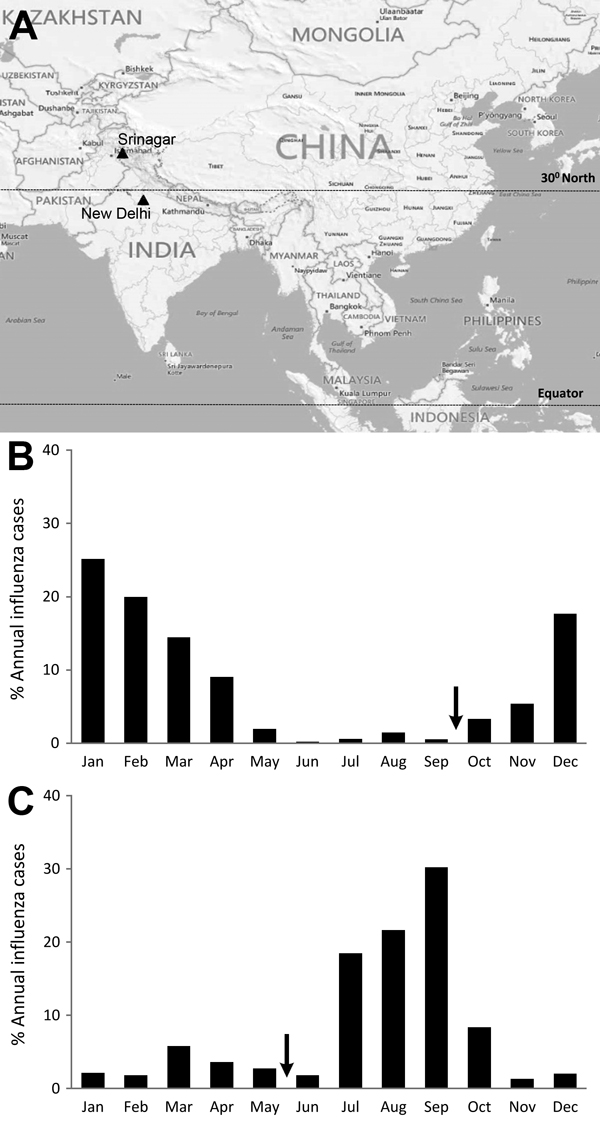Volume 20, Number 10—October 2014
Dispatch
Differences in Influenza Seasonality by Latitude, Northern India
Figure 2

Figure 2. Comparison of latitudes of Srinagar and New Delhi, India, and distribution of influenza virus infections, 2011–2012. A) Locations of Srinagar and New Delhi (black triangles), with vertical lines indicating 30°N latitude and equator. B) Monthly distribution of cases of influenza virus infection in Srinagar (34.0°N latitude). C) Monthly distribution of cases of influenza virus infection in New Delhi (28.7°N latitude). Arrows indicate proposed vaccination timing; latitude of each city is shown. Map created in Epi-Map in Epi Info 7 (Centers for Disease Control and Prevention, Atlanta, GA, USA).
1These authors contributed equally to this article.
2Current affiliation: INCLEN Foundation, New Delhi, India.
Page created: September 22, 2014
Page updated: September 22, 2014
Page reviewed: September 22, 2014
The conclusions, findings, and opinions expressed by authors contributing to this journal do not necessarily reflect the official position of the U.S. Department of Health and Human Services, the Public Health Service, the Centers for Disease Control and Prevention, or the authors' affiliated institutions. Use of trade names is for identification only and does not imply endorsement by any of the groups named above.